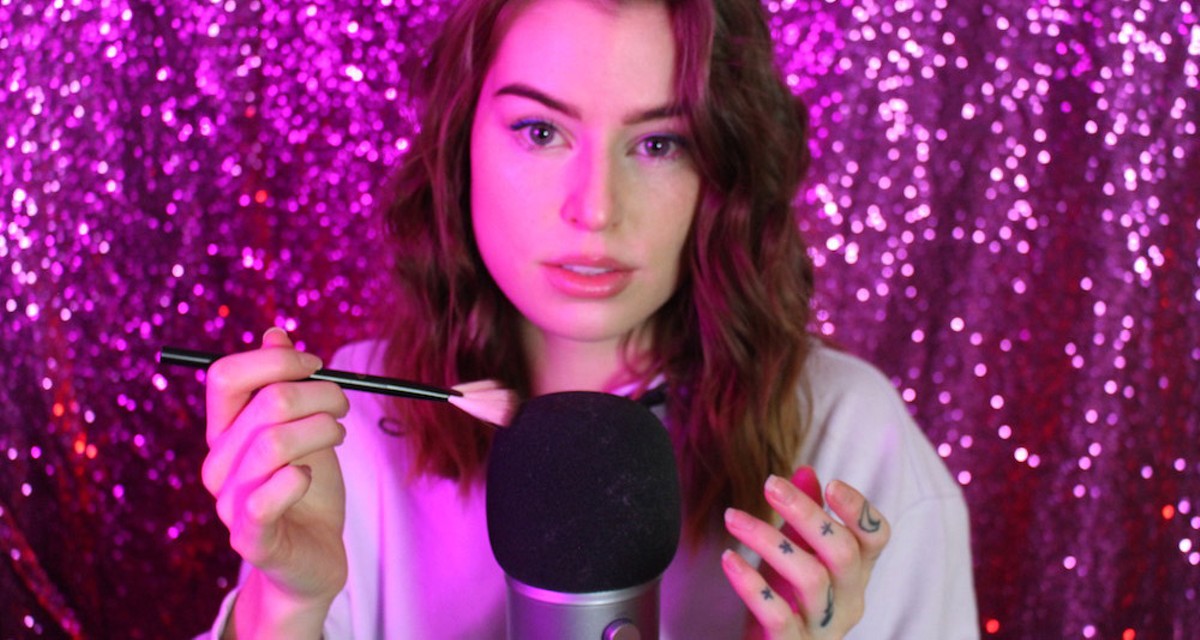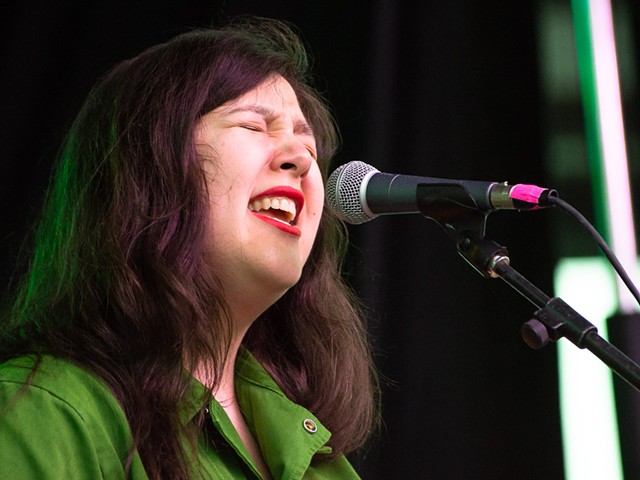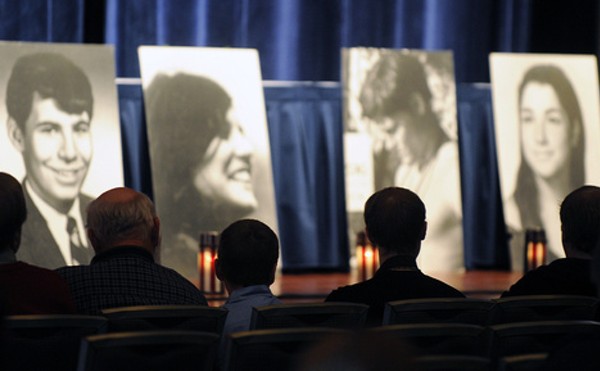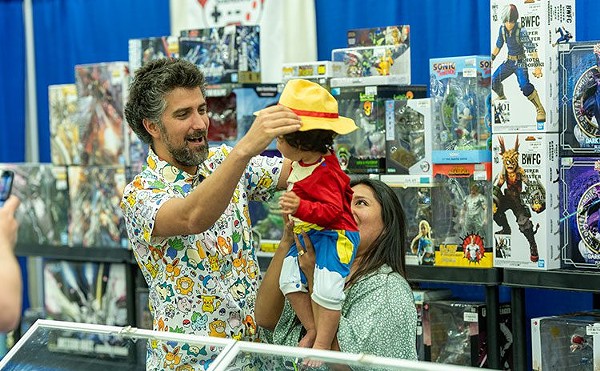Everyone thinks they know what ASMR is. If someone once saw a YouTube video of an ASMR artist eating fried chicken, that’s what they think it is. If they once saw a video of a woman suggestively licking a microphone tagged “ASMR,” that’s what it is. Some people think it’s repulsive. That it’s borderline pornography. That it’s utterly incomprehensible. It doesn’t help that one of the few ASMR artists who managed to go viral is a little girl (Life with MaK). The genre is easy to dismiss.
However, ASMR has emerged as a legitimate art form. ASMR technically refers to the “Autonomous Sensory Meridian Response” — the pleasant tingling sensation some people experience from audio or visual stimuli, but its usage has evolved to include the videos that feature ASMR content. It requires creativity, craft and performance. In fact, every ASMR artist must be a writer, performer, editor, director and producer. Sometimes, a measure of music, stanza of poetry or a phrase of dance is so beautiful it gives us a physical reaction — ASMR artists do the same thing by crafting sound, atmosphere and movement (it’s not all about sound). The platform that helped it take off is YouTube, but as more people recognize the innovative work in the ASMR genre, we’re going to see the genre merge with other disciplines. For example, one of our hometown ASMR artists, Grapes Leaf ASMR on YouTube, has already merged ASMR with yoga, fashion and even ballet. Next, she’s looking toward a musical collaboration.
ASMR videos by nature create the illusion of intense intimacy between the viewer and the artist — imagine watching daily videos of someone maintaining constant eye contact while whispering in your ear. Despite ASMR having gradually inched toward the mainstream, most people aren’t sure what to do with it or where it falls within the arts scene. But artists aren’t “most people” — we’re curious, open-minded and a bit thievish and can recognize when we see elements that will fit into our own work.
And ASMR artists offer a lot to borrow from. The problem for anyone interested in collaborating with a local ASMR artist is they’re remarkably difficult to track down. YouTube performers with any kind of following must work hard to maintain their privacy — particularly in this genre. Many ASMR artists, mostly women, have left the craft behind due to stalkers, harassment and doxxing.
Grapes Leaf ASMR has built a following of 35,000 subscribers, admirable for a relatively new channel. (She wants to be identified by only her screen name to avoid harassment.) Every ASMR artist has their own personality, but most of them are remarkably similar — soft-spoken, peaceful and “sweet” — whereas Grapes’ videos often emphasize the goofy and comedic aspects of her personality. She has the usual peaceful, whispering videos — face-painting, finger-fluttering, all the ASMR staples — but she tends toward experimentation as she incorporates various other interests such as yoga, fashion and silliness.
One gem in her catalog is a role play, where she dresses as the Sun-Maid Raisins girl who is conducting a wine tasting for the viewer because she’s thinking of branching out into wine. Here, her personality shines through, as does the quality of not taking herself too seriously. There’s the usual ASMR fare: tapping of manicured nails on the lid and bottle, liquid pouring into a glass, soft-spoken off-the-cuff chatter, as well as her own brand of humor.
Wearing the recognizable red bonnet, she introduces herself. She’s a “top quality raisin lady,” she boasts, deadpan, and later confides, “I hope you don’t mind sharing a wine glass. I only have one wine glass, but I have a million raisins. They don’t pay me — they just send raisins.” Together, she and the viewer share glasses of wine until she convinces the viewer to invite her along to a Halloween party so that, “When you say you know someone famous, they’ll believe you, because I’ll be right there.”
Sound silly? This scenario, yes, and intentionally so. ASMR role-plays are popular, from haircuts and facials to customer service scenarios like visiting a candle store or checking into a hotel — yes, there is a market for people who want to watch an ASMR artist fill out paperwork. Local musician Bobby Barbour (they/their), of Psychic Skin, a collaborative audio arts project you may have seen around town in venues such as Surface Noise, The Butchertown Social and Speed Art Museum, has an explanation for this.
Barbour, who creates ambient and environmental music closely related to ASMR, said, “In the world of art, there is a style of work known as ‘social practice.’ With social practice work, the experiences and engagement of the audience is just as much a part of the work as the physical mediums used. ASMRtists and their videos are very deeply steeped in this art philosophy, and they have used it to create a community based on supporting each other through these shared relaxation videos.”
Grapes sat down to chat with me about her work. According to her, ASMR satisfies her affinity for production design, which is her original background. Out of high school, she tried fashion design but quickly realized that she was more interested in production design, which she majored in, minoring in lighting and costume design. But she grew disenchanted. According to Grapes, while she loved the work, “I could never see myself being a production designer. I don’t want to work on anyone else’s dream. I could never imagine myself getting a job in the theater and doing this stuff, and I was confused because I couldn’t see it being my future. Once I started doing YouTube, all these things started coming together. Basically, I wanted to be very selfish with my production design and only use it for myself.”
When I ask Grapes how far ASMR can go as a genre, she conjured ideas of an entire show based on ASMR or live, onstage ASMR. What would it take to make that happen? Her answer is a wry, “Money. People who make more money doing it are going to be able to do these things on a bigger scale, and they’re leading us and furthering it as an art.”
It’s true — on any ASMR artist’s channel, you can see the production values improve month-by-month as they gain followers and “patrons.” The equipment is expensive, and creating a good video can eat up an entire day, after planning, setup, execution and editing.
I reached out to a few local and state arts organizations that offer grants and asked about their position on ASMR as a viable grant-eligible medium. Only one responded, and they weren’t familiar enough with the genre to say one way or another.
Then again, the very act of applying for arts grants requires a degree of confidence. It requires an artist’s conviction that they have something to offer.
That was a theme that popped up more than once in my conversation with Grapes, who said, “I put off making the channel for a long time because I couldn’t stand the thought of doing something so selfish like, ‘Hey everybody look at me, look at my skills.’”
But she’s been devoted to her channel for about a year now, and there’s an audience clamoring for those skills, so it’s far from selfish. After all, the point of the videos is to provide a service to the audience.
“When I have an idea, I think about what lighting design will be good for it, so I get further into it with color theory,” Grapes said. “Right now, I’m working on something that’s supposed to be ‘ASMR for the morning,’ which is a little different because it’s supposed to be for sleep, but I want it to be a morning motivation and relaxing, so an orange and yellow color scheme is supposed to be the sunrise, and I want to put bird sounds into it. I love feeling like I’m helping people either relax or fall asleep or feel better.”
Barbour is eager to collaborate with an ASMR artist for that very reason. “The general aim of what I do creatively, especially musically, is to make spaces conducive to stress relief. I feel that ASMR videos are very much aligned with this concept, and considering this, it just feels like such a collaboration is the natural next step for me. I also feel that this kind of collaborative project with an ASMRtist would bring something new and interesting both to the ASMR community as well as the art scene.”
Louisville is already a city that embraces artistic collaboration. The prestigious Hadley Creatives represent many different disciplines, and their final projects represent interdisciplinary collaboration. At the recent Louisville Bespoke Fashion Show, poets Erica Rucker, Iris Moreno-Brown and Morgan Eklund performed poetry alongside Louisville Ballet’s Erica De La O’s dance interpretation. Last year, poet Hannah L. Drake and dancer Brandon Ragland were enormously successful in their collaboration for the Louisville Ballet’s choreography showcase.
When it comes to ASMR, music seems to be a natural fit — though many people forget that visual triggers such as hand motions are an enormous part of the ASMR experience — and some mainstream artists such as deadmau5 and 21 Savage have already experimented with incorporating ASMR elements into tracks.
Barbour reflected on this relationship, citing a belief that both they, as musicians and ASMRtists, are creating for a purpose: the need to provide anxiety relief. Barbour sums it up like this: “The ASMR community on YouTube is a great model and something that could be applied to any sort of community, the Louisville art scene included. Also, stress and anxiety are universal. These sorts of mental health issues span all backgrounds. And in a time where the socio-political climate is so tense, chaotic and sometimes frightening, I feel we all could benefit from the positive energy and sense of community ASMR videos look to bring.”






